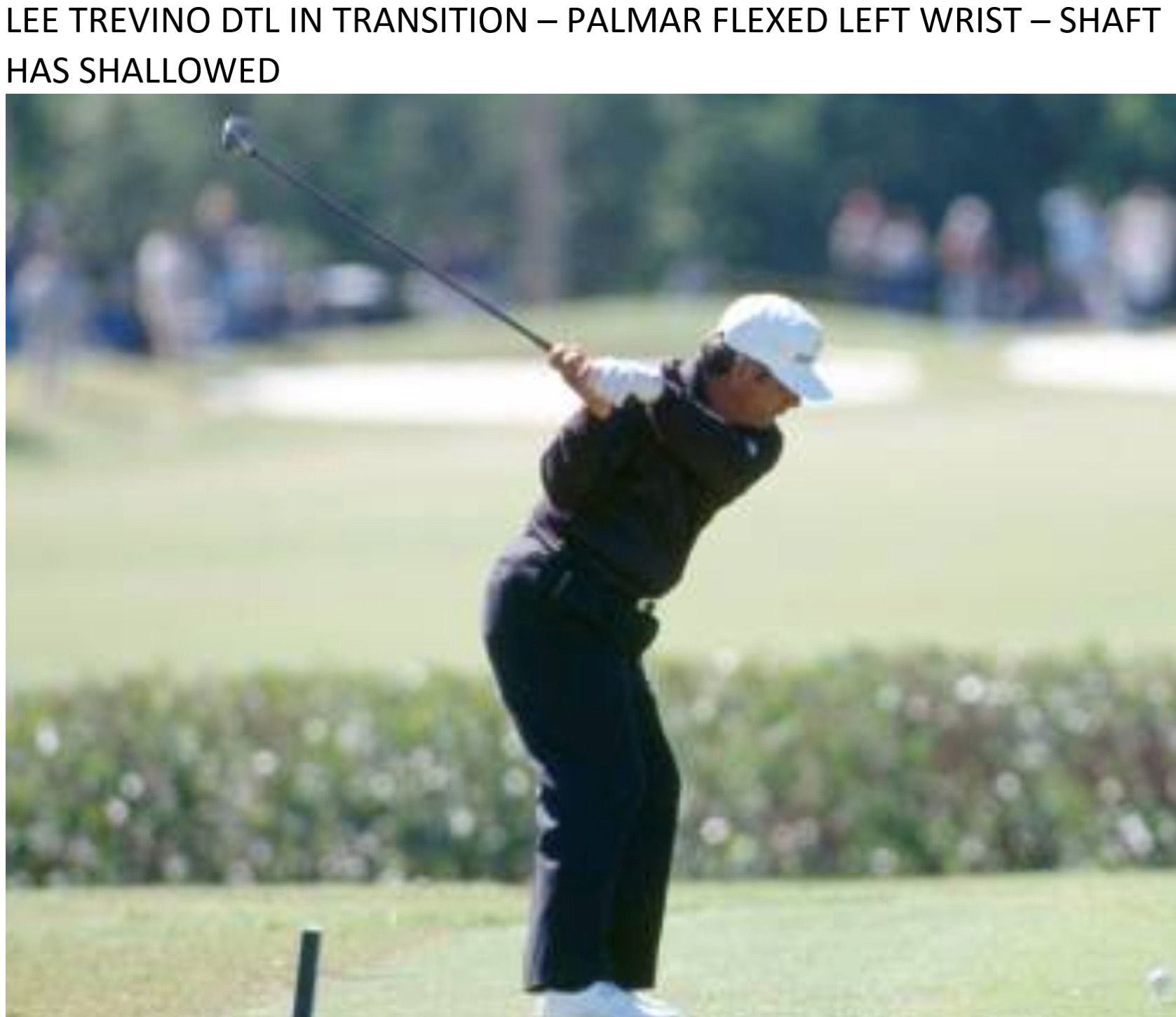
3 Easy Steps to Shallow the Golf Club and Transform Your Swing
3 Easy Steps To Shallow
Hi friends and golfers! I'm Coach Erik Schjolberg, owner of EJS Golf at McCormick Ranch Golf Club in Scottsdale, AZ. With over 25 years of experience coaching golfers from PGA Tour pros to passionate amateurs, I'm dedicated to helping every player improve from their very first lesson. My state-of-the-art facility and data-driven approach guarantee results, whether you're seeking in-person Scottsdale golf lessons or online golf lessons. Visit my website, EJS Golf, to learn more about the Science of Better Golf and let's elevate your game together!
As the head golf coach at Swingyard.com, I’ve helped countless golfers transform their swings and lower their scores. One of the most impactful changes you can make is learning how to shallow the golf club. Shallowing the club can lead to more consistent shots, increased power, and better accuracy. In this blog post, I’ll guide you through three easy steps any golfer can take to achieve a shallower swing, incorporating the physics behind the movement to deepen your understanding and making sure the change becomes your dominant motor pattern at some point.
Step 1: Understand the Physics of Shallowing the Golf Club
Before making any changes, it’s crucial to grasp the concept of why shallowing the club is beneficial. Shallowing the golf club means bringing the club down on a flatter plane during the downswing. This motion allows the club to approach the ball from the inside, promoting solid contact and a powerful draw.
Think of it like a boat pulling a water skier. If the boat makes a smooth, wide turn (a shallow path), the skier glides effortlessly across the water. But if the boat makes a sharp, steep turn, the skier struggles to maintain balance. Similarly, a shallow swing path creates a smoother, more efficient motion, allowing you to transfer energy effectively to the ball.
The physics behind this involves the line of force and angular momentum. A shallower swing path aligns the club’s line of force with the desired ball flight, maximizing energy transfer. By reducing the steepness, you decrease the likelihood of cutting across the ball, which often leads to slices and weak shots. Understanding this concept sets the foundation for the practical steps to follow.

Step 2: Implement Proper Body Mechanics
Now that you understand the why, let’s focus on the how. Proper body mechanics are essential for shallowing the club. This step involves coordinating your hips, torso, arms, and wrists to work in harmony during the swing.
Initiate the Downswing with Your Lower Body
Begin the downswing by shifting your weight to your lead foot and rotating your hips toward the target. This movement creates a natural dropping of the arms and club into a shallower plane. Imagine your hips leading the way, pulling your upper body and arms through the swing. This sequence is crucial because starting the downswing with your upper body often results in an over-the-top motion, steepening the club’s path.
Maintain Proper Side Bend
Maintaining side bend away from the target helps keep the club on the correct plane. As you rotate your hips, focus on tilting your upper body slightly away from the target. This position prevents your shoulders from becoming too level, which can cause the club to steepen. Think of your spine as the axis around which your body rotates; keeping the proper tilt ensures a more efficient swing.
Control Your Wrist Mechanics
Your wrists play a significant role in the club’s position during the downswing. Aim to maintain a flexed (bowed) lead wrist as you start the downswing. This wrist position helps close the clubface slightly and promotes a shallower swing path. Avoid cupping your lead wrist, as this opens the clubface and can cause the club to steepen. Practice holding this wrist position to build muscle memory and improve control over the club face.

Step 3: Practice Targeted Drills to Reinforce the Movement
Understanding and proper mechanics are essential, but practice is what ingrains the new movement into your swing. Here are some drills designed to help you feel and reinforce the shallowing motion.
Drill 1: The Water Skier Drill
This drill uses the earlier analogy to help you visualize and execute a shallow swing.
1. Setup: Assume your normal stance with a mid-iron and imagine you’re holding a ski rope attached to a boat.
2. Movement: As you start your downswing, visualize the boat making a wide, smooth turn, pulling you along. This imagery encourages a shallow path.
3. Focus: Feel the club dropping behind you, with your hips rotating and your upper body maintaining side bend.
4. Repeat: Practice this motion slowly at first, gradually increasing speed as you become more comfortable.
By associating the swing with the smooth turn of a boat, you encourage a natural shallowing of the club, making the movement more intuitive.
Drill 2: The Split-Grip Drill
This drill enhances your awareness of the club’s position and promotes proper wrist mechanics.
1. Setup: Grip the club with your lead hand at the top of the grip and your trail hand lower down the shaft.
2. Movement: Make slow practice swings, focusing on keeping your lead wrist flexed and the clubhead trailing behind your hands.
3. Focus: Feel the separation between your hands, which exaggerates the shallowing motion and prevents the club from steepening.
4. Repeat: Incorporate this drill into your practice sessions to build muscle memory.
The split-grip drill isolates wrist action and helps you maintain the correct wrist position throughout the swing.
Drill 3: The Hip Bump Drill - Lead Knee Back to Address
This drill emphasizes initiating the downswing with your lower body, a key component of shallowing the club.
1. Setup: Take your normal stance and place an alignment stick in the ground outside your lead hip.
2. Movement: As you start the downswing, shift your weight to your lead foot, gently bumping your hip into the alignment stick and replanting your left knee where it was at address
3. Focus: Ensure your hips rotate after the bump, pulling your arms and club into a shallow path.
4. Repeat: Practice this movement to synchronize your weight shift and hip rotation.
The hip bump drill trains you to start the downswing correctly, promoting a natural shallowing of the club through proper sequencing.
Bringing It All Together: The Line of Force
Understanding the line of force is essential for grasping how these steps improve your swing. The line of force refers to the direction of the force applied to the club during the swing. When you shallow the club, you align the line of force more effectively with your intended ball flight. This alignment maximizes energy transfer and increases swing efficiency.
Imagine pulling a rope attached to a heavy object. If you pull directly in line with the object, it’s easier to move. If you pull at an angle, it’s more challenging, and you waste energy. Similarly, a shallow swing path ensures your effort is directed efficiently toward the ball, maximizing power and control.
By combining the physics of shallowing with proper body mechanics and targeted practice, you create a powerful synergy. Each element supports the others, leading to a more consistent and effective golf swing.
Conclusion: Take Action and See Results
Shallowing the golf club doesn’t have to be a complex process reserved for professionals. By understanding the physics behind the movement, adjusting your body mechanics, and practicing targeted drills, you can make significant improvements in your swing. These three steps provide a clear and actionable path toward better golf.
Remember, consistency is key. Incorporate these drills into your regular practice routine, and be patient with yourself as you adjust to the new movements. Over time, you’ll develop a more efficient swing that not only improves your performance but also enhances your enjoyment of the game.
At Swingyard.com, we’re dedicated to helping golfers of all levels achieve their goals. If you have questions or need personalized coaching, don’t hesitate to reach out. Together, we can unlock your full potential on the course.
About the Author
As the head golf coach at SwingYard.com, I bring years of experience and a passion for teaching to every lesson. My approach focuses on simplifying complex concepts like the physics of the golf swing, making them accessible and actionable for all golfers. Visit Swingyard.com for more tips, personalized coaching, and to join a community committed to improving and enjoying the great game of golf.
(480) 861-9370
